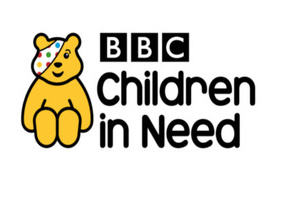BBC Children in Need has become synonymous with the word telethon since its televised fundraising appeal first burst onto our screens in 1980.
Its famous yellow mascot, Pudsey, was introduced five years later in 1985. Red Nose Day, the telethon that fundraises for Comic Relief, came close on its heels in 1988.
Despite the millions that these appeals have raised for charity over the years, their on-the-night totals have been declining since the pandemic.
This year, Children in Need raised its lowest on-the-night total since 2014 of £33.5m.
Similarly, Comic Relief’s on-the-night total fell by 25% from £42.8m to £32m in 2023. In 2015, Red Nose Day made more than double the amount it made this year (£78m) from its telethon.
As the number of people watching TV declines and giving habits shift, it begs the question - is it only a matter of time before charity telethons disappear from our screens?
Children in Need report lowest total since 2014
Last week, Children in Need raised its lowest on-the-night total since 2014, when it raised £32.6m from the annual telethon which supports children and young adults with disabilities.
From 2013, its totals on the night increased every year until 2018 when the charity reached its highest on-the-night total in the last ten years with £50.6m. This fell slightly by 5% to £47.9m in 2019.
Unsurprisingly, the biggest drop in on-the-night income was to come in 2020, which saw it fall by over £10m to £37m.
While 2021 saw a slight increase of £2m, since then its on-the-night totals have continued to decline - with the charity failing to match its pre-pandemic heights.
Children in Need’s director of income, marketing and communications, Claire Hoyle told Civil Society that its on-the-night total for 2023 reflected the charity's forecasts.
“In these tough and uncertain times, we asked that public to give what they could, if they could and we were delighted to raise such a significant amount of money on Friday evening.”
She cited the difficult fundraising market as a potential reason for the decline in totals.
“The last couple of years have been incredibly hard for so many, from Covid to the cost-of-living crisis. In light of the current climate, we were overwhelmed to have raised such a significant amount of money on Friday evening.”
Comic Relief's total drops by 25% in a year
Comic Relief’s telethon has experienced a similar decline in on-the-night totals, dropping by a quarter from 2022 to 2023.
Registered under the name of Charity Projects, the charity’s annual telethon alternated between fundraising for Comic Relief and Sport Relief each year from 2002 until 2021, when it announced that Red Nose Day for Comic Relief would be annual.
The graphs below demonstrate that the amounts raised for both annual events have dropped in the last ten years.
Comic Relief raised £78m on the night of its telethon in 2015, but this has fallen since then. 2023's appeal raised £32m, less than half the amount it raised eight years before.
Sport Relief's 2018 on-the-night total of £38.1m is the lowest for the event since 2008. Despite the pandemic, its total for 2020 increased slightly to £40.5.
A Comic Relief spokesperson told Civil Society: “The past few years have been incredibly tough - the pandemic, world events and the ongoing cost-of-living crisis have taken a huge toll - and the scale and severity of poverty in the UK is only increasing. It’s a challenging time to fundraise, and there’s still so much economic uncertainty, yet people need support more than ever.
“The huge generosity shown by the British public every year, and their desire to help others, continues to blow us away. We remain committed to raising as much as we can each year to support charities tackling poverty here in the UK and around the world.”
Fewer people are watching TV
Some of the reasons for the decline in telethons on-the-night fundraising totals are obvious; people are not watching TV as much as they used to, and certainly not in the same way. Ofcom's latest media report describes linear TV viewing as in a state of “long-term decline” as people opt for streaming services instead.
The regulator's report also states that the majority of young people do not watch as much television as the elderly, with young people watching seven times less TV than those over 65.
In February, Children in Need’s Hoyle spoke to Fundraising Magazine about why its on-the-night total was down on pre-pandemic levels.
She cited two main reasons: the decline in linear TV watching and the cost-of-living crisis, which means people may be less likely to donate.
“We’re looking at diversifying income to compensate for the decline in linear TV viewing,” she told Fundraising Magazine.
“The BBC is still doing a brilliant job for us, mainly with slightly older audiences, which are important as well, and bring in a lot of money. So, we have been thinking about our different platforms and where can we reach those target demographics. This has driven some of our decisions to change things up a little bit.”
Charlotte Sherman, growing giving policy and partnerships manager at the Chartered Institute of Fundraising, says that new technologies are changing the way that people donate.
“Technology, alongside generational and societal shifts are fundamentally changing the giving landscape. That is not to say that telethons are no longer valuable, they can be a powerful way to raise awareness of a charity’s work and are still raising tens of millions of pounds. To grow charitable giving, we need to recognise the unique role fundraising plays in both raising income, but also bringing people together and inspiring them to act.”
Diversifying income
Both Children in Need and Comic Relief have begun producing short-form content on TikTok so its content reaches donors on all platforms and of various ages. This year, Children in Need partnered with TikTok LIVE to launch an appeal on the platform, which saw some creators creating specialist content for the charity.
Comic Relief also worked with the platform this year. TikTok created Red Nose gifts which if clicked on while watching a Comic Relief LIVE, would ensure TikTok would donate money to the charity. Pudsey Gifts were also enabled for Children in Need.
Hoyle told Civil Society: “Our 2023 appeal saw a new partnership with TikTok which enabled users of the platform to support us through the sending of specially created Pudsey Gifts, and a new fundraising proposition - The Pudsey Bearpee Challenge - in partnership with our ambassador, Joe Wicks. We continually strive to deliver impactful, engaging campaigns to unite our supporters and inspire fundraising.”
Comic Relief said it is also diversifying its income by forming new partnerships and delivering appeals outside of its annual telethon.
A Comic Relief spokesperson said: “We recently launched a new organisational strategy to support diversifying income and focus on creating new ways to fundraise at different times of the year. Since then, we’ve run a winter appeal with the Evening Standard, formed a new partnership with Parkrun, are one of Jingle Jam’s charity partners for their Christmas gaming event, and are soon to launch an urgent appeal this winter.”
Are telethons becoming outdated?
Another possible reason for the decline in on-the-night totals is the changing way in which people donate to charity, as the fundraising format often encourages people to donate via phone or text message.
The Phone-Paid Services Authority reported a decline in charity donations via phone in 2022-23 of 28% in its latest report.
Its annual market review for phone-paid services reported a fall in charity donations of £14.1m to £35.9m for the year 2022-23, both for telethon and non-telethon fundraising. It had forecast for it to fall by just £5.4m.
The regulator put the decline in charity donations down to the fall in TV viewership, cost-of-living pressures, and the absence of Stand Up 2 Cancer this year due to it being a biennial event.
The future of the telethon
In a Charity Digital article by Joe Lepper, The future of the fundraising telethon, he writes how Stand Up 2 Cancer seems to have escaped the decline in the telethon market.
Stand Up 2 Cancer, a televised appeal for Cancer Research UK on Channel 4, began in the UK in 2012 and has had biennial shows ever since.
The fundraiser, while having a live show every two years, differs from Red Nose Day and Children in Need in that it does not rely as heavily on a single evening of fundraising activity.
Instead, it presents real-life stories of people experiencing cancer alongside special episodes of popular TV shows like the Great British Bake Off, Gogglebox, First Dates, and more.
Cancer Research UK’s head of fundraising & marketing, Simon Harrison, says: “Throughout the year we invite the nation to get involved with different programming and fundraising activities, and the live night of TV returns every 2 years featuring famous faces and some of the brightest stars in film, TV and music.”
It has previously engaged YouTube influencers in its campaigns as well. In 2018, it broadcast a YouTube Community Special on the platform and had sexual health YouTube creator Hannah Witton interview Amanda, a woman with experience of vaginal cancer, to raise money for the campaign.
While telethons are still making millions for charity, the year-on-year decline seems to represent a change in TV viewing and ways that people donate to charity.
After 40 years of the format, this does not come as a surprise. The shows have continuously needed to adapt to stay relevant, with BBC Children in Need shifting from six-hour to three-hour shows in 2020.
“Nobody’s going to sit and watch TV for six hours these days,” Hoyle told Fundraising Magazine.
As the way in which people consume media changes, so too should fundraising telethons in order for them to stay relevant and keep bringing in the donations they used to.












